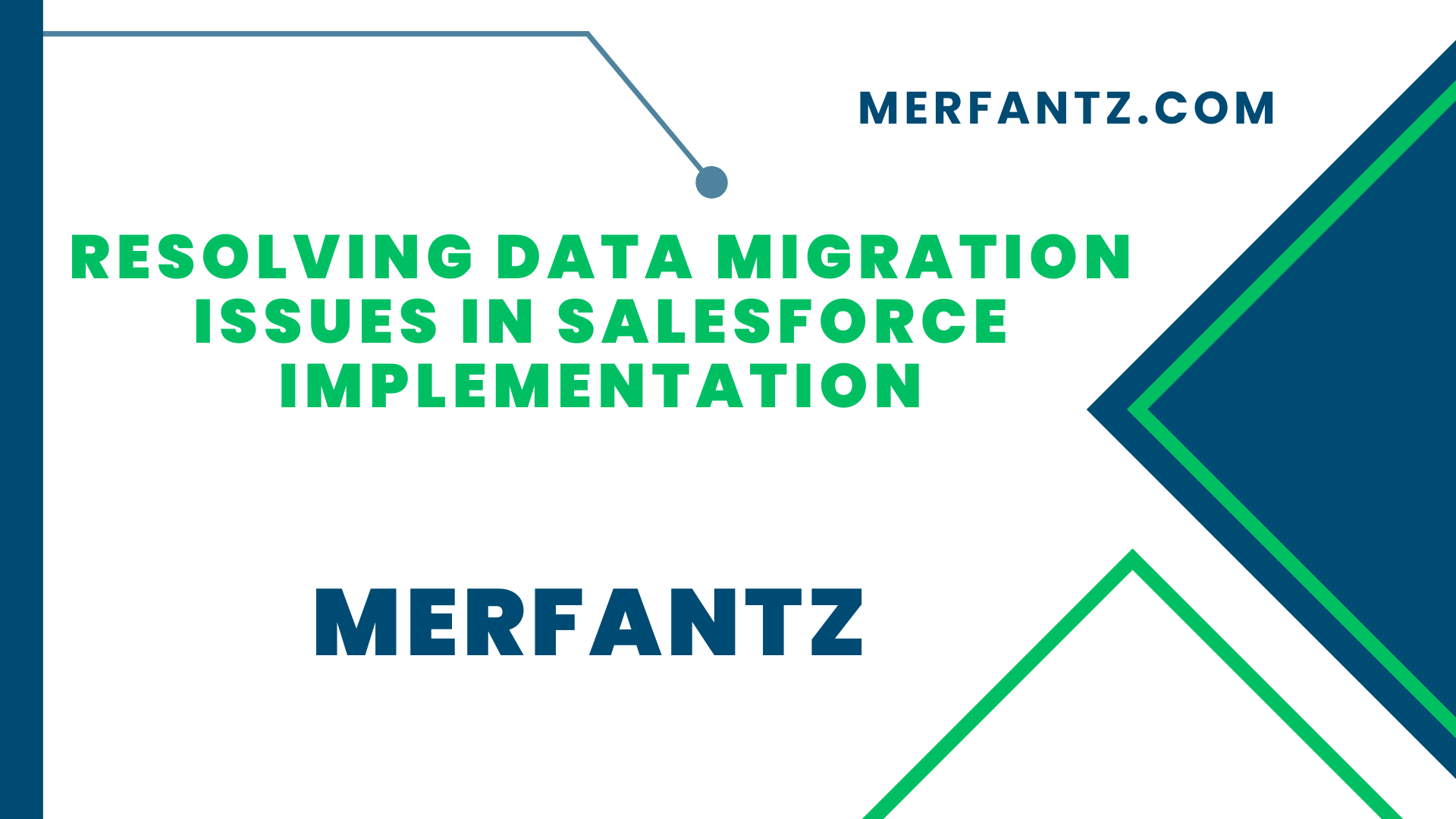Common Data Migration Challenges in Salesforce Implementation
When it comes to Salesforce implementation, data migration can be a daunting task with its fair share of challenges. One common hurdle faced by organizations is incomplete or inaccurate data mapping. Inaccurate data mapping occurs when the source data fields do not align correctly with the corresponding fields in Salesforce. This can lead to data discrepancies, loss of important information, and hinder the overall effectiveness of the implementation. It is crucial to identify and rectify any inconsistencies in the mapping process to ensure a smooth and successful migration.
Another challenge in Salesforce data migration is data cleansing and deduplication. Legacy systems often contain redundant or outdated data, which can impact the integrity of the migrated data. Implementing data cleansing techniques involves identifying and eliminating duplicate records, updating obsolete information, and ensuring data consistency. By employing robust data cleansing and deduplication techniques, organizations can enhance the quality and reliability of their Salesforce data, leading to better decision-making and improved user experience.
Incomplete or Inaccurate Data Mapping
Incomplete or inaccurate data mapping can have severe consequences during Salesforce implementation. Incomplete mapping occurs when certain data fields from the source system are not properly mapped to their corresponding fields in Salesforce. This can result in data loss, inconsistency, and an incomplete view of customer information. To overcome this challenge, organizations should conduct a thorough analysis of the data mapping process, ensuring that all relevant fields are mapped correctly. Regular audits and validation checks can help identify and rectify any inaccuracies, ensuring the successful transfer of data.
Accurate data mapping is essential for a seamless Salesforce implementation. It involves mapping the source system’s data fields to their respective Salesforce fields accurately. By doing so, organizations can ensure that the migrated data is complete, consistent, and usable within the Salesforce environment. To achieve accurate data mapping, it is crucial to involve experts who possess a deep understanding of both the source system and Salesforce. They can identify any potential gaps or discrepancies and implement the necessary adjustments to ensure a smooth and error-free migration process.
Data Cleansing and Deduplication Techniques for Successful Migration
Data cleansing and deduplication are crucial steps in ensuring a successful Salesforce data migration. Legacy systems often contain duplicate, outdated, or inconsistent data that can negatively impact the integrity and reliability of the migrated data. By employing effective data cleansing techniques, organizations can identify and eliminate duplicate records, correct inaccuracies, and ensure data consistency. Additionally, implementing deduplication techniques helps in maintaining a clean and organized Salesforce database, leading to improved data quality and enhanced user experience.
To perform data cleansing and deduplication effectively, organizations can leverage various tools and methodologies. These can include automated processes that analyze and compare data records, identify duplicates, and merge or eliminate redundant information. Manual review and validation can also be employed to ensure the accuracy and completeness of the migrated data. By implementing robust data cleansing and deduplication techniques, organizations can minimize data inconsistencies, enhance data quality, and set a solid foundation for a successful Salesforce implementation.
Best Practices for Data Extraction from Legacy Systems
Data extraction from legacy systems is a critical aspect of Salesforce data migration. Legacy systems often store data in different formats or structures that may not align with the requirements of Salesforce. To overcome this challenge, organizations should follow best practices for data extraction. This includes identifying the relevant data to be migrated, ensuring data compatibility between the legacy system and Salesforce, and using appropriate tools or methods for extracting data accurately. By adopting these best practices, organizations can streamline the extraction process and ensure a smooth transition of data to Salesforce.
During the data extraction process, it is important to maintain data integrity and consistency. This can be achieved by performing data validation checks, ensuring data accuracy, and addressing any discrepancies or errors. It is recommended to involve experienced professionals who understand the intricacies of legacy systems and can effectively extract the data while preserving its quality. By adhering to best practices for data extraction, organizations can minimize risks, optimize the migration process, and lay a strong foundation for a successful Salesforce implementation.
Ensuring Data Integrity and Consistency throughout the Migration Process
Maintaining data integrity and consistency is crucial throughout the entire Salesforce migration process. Data integrity refers to the accuracy, completeness, and reliability of data, while data consistency ensures that the data is uniform and coherent. To achieve this, organizations should implement rigorous validation and verification processes. This involves performing data quality checks, addressing any inconsistencies or errors, and ensuring that the migrated data aligns with the defined data models and business rules. By ensuring data integrity and consistency, organizations can trust the accuracy of their Salesforce data and make informed decisions based on reliable information.
To ensure data integrity and consistency, organizations should establish data governance practices and define data quality standards. This includes documenting data definitions, establishing data validation rules, and implementing data cleansing and enrichment processes. It is essential to involve stakeholders from various departments to ensure that the migrated data meets the specific needs and requirements of the organization. By taking a proactive approach to data integrity and consistency, organizations can enhance the overall effectiveness of their Salesforce implementation and drive better business outcomes.
Step-by-Step Data Migration Process for Salesforce Implementation
A successful Salesforce implementation requires a well-defined and structured data migration process. Here is a step-by-step guide to help organizations navigate the data migration journey:
Step 1: Assess Data Quality and Completeness: Evaluate the quality, accuracy, and completeness of the existing data to identify any gaps or areas that need improvement.
Step 2: Plan and Design Data Mapping: Map the data fields from the source system to the corresponding fields in Salesforce, ensuring accurate and complete data transfer.
Step 3: Data Cleansing and Deduplication: Cleanse the data by eliminating duplicates, updating outdated information, and ensuring data consistency to improve data quality.
Step 4: Extract and Transform Data: Extract data from the legacy system, transform it according to Salesforce requirements, and validate the data for accuracy and completeness.
Step 5: Execute Data Migration: Transfer the cleansed and transformed data to Salesforce using reliable migration tools and methodologies.
Step 6: Validate and Test: Perform thorough testing and validation to ensure the accuracy and integrity of the migrated data.
Step 7: Go Live and Monitor: Once the data migration is complete, monitor the system closely to ensure smooth operations and address any post-migration issues promptly.
Assessing Data Quality and Validating Data Accuracy
Assessing data quality and validating data accuracy are crucial steps in ensuring a successful Salesforce data migration. Organizations should conduct a comprehensive analysis of the existing data to identify any inconsistencies, errors, or missing information. This includes evaluating data completeness, identifying data gaps, and assessing data relevance to the Salesforce implementation. By conducting thorough data quality assessments, organizations can uncover potential issues and address them proactively, leading to improved data accuracy and reliability.
To validate data accuracy, organizations should establish robust validation processes and data integrity checks. This involves comparing the migrated data with the source system, performing data validation tests, and addressing any discrepancies or errors. It is essential to involve data owners, subject matter experts, and stakeholders throughout the validation process to ensure the accuracy and relevance of the data. By diligently assessing data quality and validating data accuracy, organizations can instill confidence in their Salesforce implementation and leverage the full potential of the platform.
Mapping and Transformation of Data to Salesforce Fields
Mapping and transformation of data to Salesforce fields is a critical step in the data migration process. It involves aligning the data from the source system with the corresponding fields in Salesforce. To ensure accurate mapping and transformation, organizations should analyze the data structures and relationships between the source system and Salesforce. This analysis helps in identifying any discrepancies or mismatches in data formats, enabling effective mapping and transformation strategies. By mapping and transforming the data accurately, organizations can ensure seamless integration and utilization of the migrated data within Salesforce.
During the mapping and transformation process, it is important to consider data enrichment and normalization techniques. Data enrichment involves enhancing the existing data with additional relevant information, such as customer demographics or product details. Normalization ensures consistent data formatting and structure across different fields and records. By applying these techniques, organizations can improve data quality, enhance reporting capabilities, and enable advanced functionalities within Salesforce.
Preparing and Executing Data Migration Test Cases
Preparing and executing data migration test cases is essential to validate the accuracy and completeness of the migrated data. Test cases should be designed to cover various scenarios, such as data validation, field mapping, data relationships, and system integrations. By meticulously planning and executing these test cases, organizations can identify and address any issues or discrepancies before the actual data migration. This minimizes the risk of data loss or data integrity issues during the Salesforce implementation.
During the testing phase, it is crucial to involve stakeholders and subject matter experts to ensure comprehensive coverage of test scenarios. Test data should be carefully selected and representative of real-life scenarios to ensure the accuracy and reliability of the results. By thoroughly testing the data migration process, organizations can gain confidence in the quality of the migrated data, mitigate risks, and ensure a successful Salesforce implementation.
Expert Guidance and Support for Data Migration in Salesforce Implementation
Navigating the complexities of data migration in Salesforce implementation requires expert guidance and support. Organizations can benefit from partnering with experienced Salesforce implementation providers like Merfantz Technologies. Our team of experts possesses in-depth knowledge and expertise in handling data migration challenges. We provide comprehensive guidance and support throughout the entire data migration process, from planning and mapping to execution and validation. Our expertise ensures a seamless and successful data migration, enabling organizations to harness the full potential of Salesforce.
With Merfantz Technologies as your trusted partner, you can rely on our proven methodologies, best practices, and industry knowledge to overcome data migration hurdles. We understand the importance of data integrity, accuracy, and consistency in Salesforce implementation. Our experts work closely with your team, offering customized solutions tailored to your specific business needs. We provide ongoing support, monitoring, and troubleshooting to address any post-migration issues. By choosing Merfantz Technologies, you gain a valuable partner that ensures a smooth and successful data migration process, empowering your organization to leverage Salesforce effectively.
FAQs:
How long does the data migration process in Salesforce implementation usually take?
The duration of the data migration process varies depending on the complexity and volume of data being migrated. It can range from a few weeks to several months. It is important to allocate sufficient time for planning, testing, and validation to ensure a successful migration.
What are the potential risks associated with data migration in Salesforce implementation?
Some common risks include data loss, data integrity issues, incomplete or inaccurate data mapping, and disruption of business operations. However, with proper planning, experienced guidance, and thorough testing, these risks can be mitigated effectively.
What are the challenges of data migration in Salesforce?
Challenges of data migration in Salesforce include incomplete data mapping, data cleansing and deduplication, data integrity and consistency, legacy system data extraction, and ensuring accurate field mapping.
How do you mitigate data migration risks and challenges?
To mitigate data migration risks and challenges, it is important to conduct thorough data analysis, plan and design data mapping, implement data cleansing and deduplication techniques, ensure data integrity and consistency, follow a step-by-step migration process, validate and test data accuracy, and seek expert guidance and support.
How do you mitigate data loss during migration?
To mitigate data loss during migration, it is crucial to perform regular backups of the source data, implement robust data validation and verification processes, conduct test migrations to identify and rectify any issues, and have a contingency plan in place to recover or restore any lost data.
How do you handle data migration?
Data migration is handled through a structured approach, which includes assessing data quality and completeness, planning and designing data mapping, performing data cleansing and deduplication, extracting and transforming data from legacy systems, executing the migration using reliable tools and methodologies, validating and testing the migrated data, and closely monitoring the process to address any post-migration issues promptly. Expert guidance and support throughout the migration process ensure a smooth and successful transition.
Conclusion:
In conclusion, resolving data migration issues is crucial for a successful Salesforce implementation. By addressing challenges such as incomplete data mapping, data cleansing, legacy system data extraction, and ensuring data integrity, organizations can ensure a seamless transition to Salesforce. Following a structured step-by-step data migration process, assessing data quality, and executing comprehensive test cases are vital for accurate and reliable data migration. Partnering with a trusted expert like Merfantz Technologies provides valuable guidance and support throughout the data migration journey. With our expertise, organizations can overcome data migration challenges, optimize data quality, and unlock the full potential of Salesforce to drive business growth and success.
Author Bio
Co-Founder & CMO at Merfantz Technologies Pvt Ltd | Marketing Manager for FieldAx Field Service Software | Salesforce All-Star Ranger and Community Contributor | Salesforce Content Creation for Knowledge Sharing






